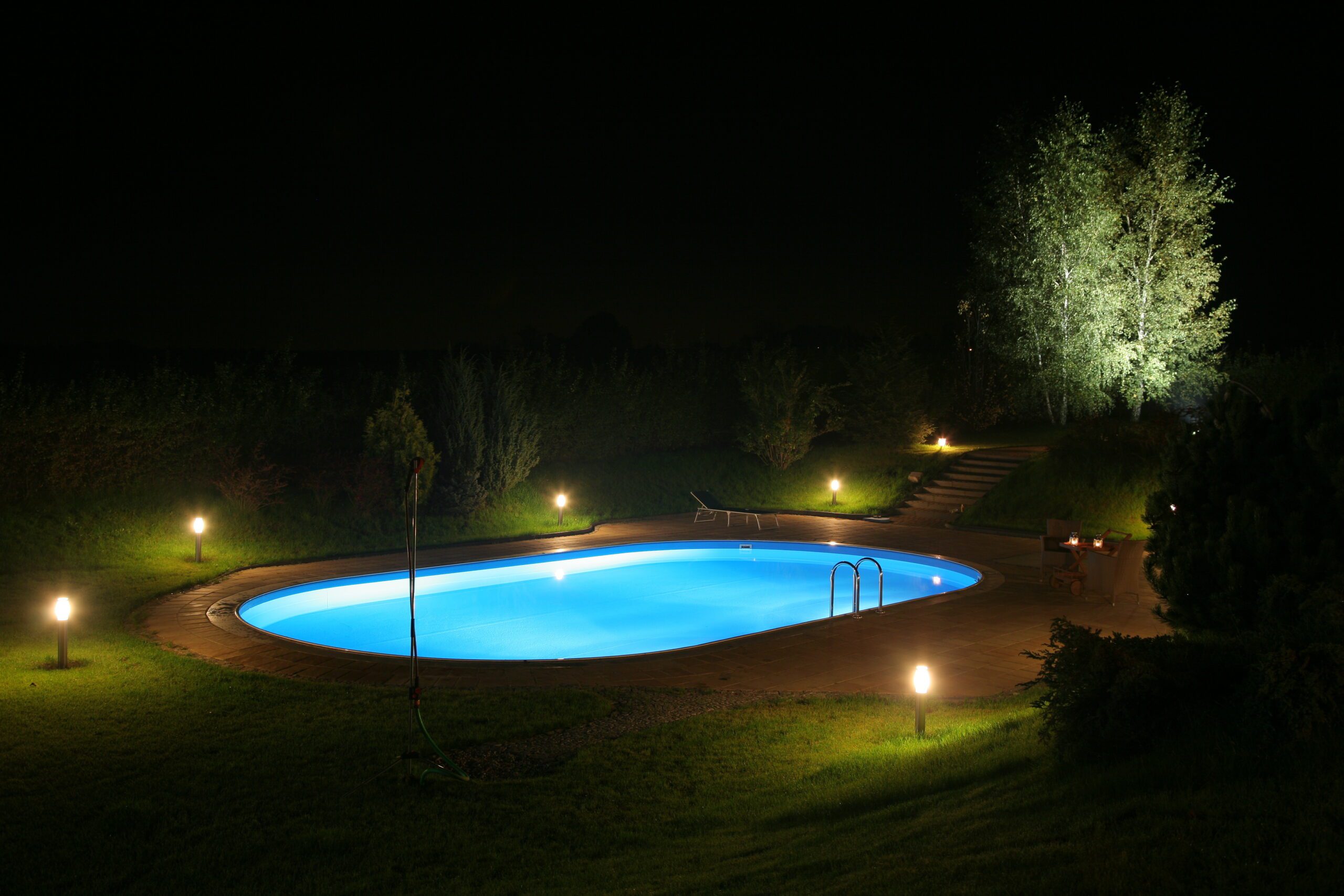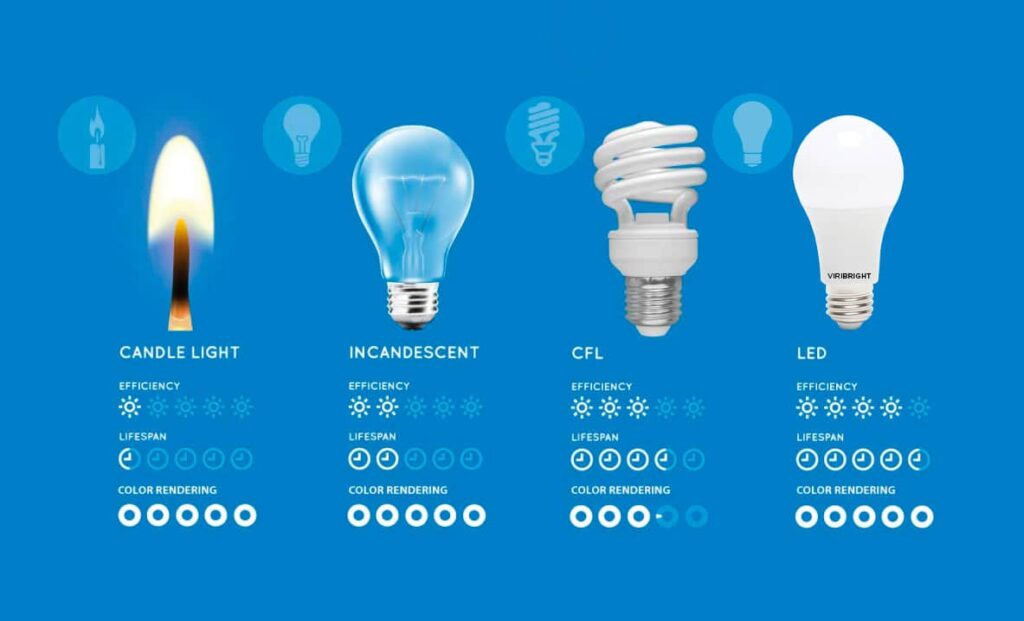
Want to learn more about algaecide? Read on to find out when to add algaecide to your pool maintenance routine and other helpful tips.
Pool lights are a necessity if you want to get maximum usage out of your pool. Limiting your pool use to the daytime means hours wasted with your favorite home investment. However, simply using incandescent bulbs will not give you the maximum enjoyment you deserve. LED lighting has become more of a staple in the past few years and has made its way to pool lighting. Today on Pool Calculator we’ll be doing a deep dive on LED pool lights. More specifically, we’ll be touching on how these bulbs work, and all of the benefits it will offer to you as a pool owner.
More articles on Pool Technology:
Click here for an article on solar pool covers
Click here for an article on UV pool sanitization
Click here for an article on Robotic pool cleaners

LED stands for “light emitting diode”. Science is boring, but useful. This means that these LED lights have a more advanced system in place when compared to incandescent bulbs. We will touch on all of the benefits of this later, but both types of bulbs perform the same task. This makes them substitutes. All lights run on wattage, and the output of this wattage is the light that we all use in the dark. The key difference between LED and incandescent lights is that LED lights are more efficient. LED lights have no filament and are basically little semiconductors. This fact allows the lights to stay cool for longer, run more efficiently, and make a brighter light than standard bulbs.
LED lights may cost more to purchase than regular incandescent bulbs, but they offer great benefits. The fact that LED bulbs are more efficient will save you money. Those bright bulbs run using 75% less wattage when compared to incandescent bulbs! I’m no mathematician, but thats a big difference. LED bulbs can run off of 37 watts. This can be compared to incandescent bulbs, that require 161 watts to reach the same output. Many may be scared off by the higher prices of LED bulbs ($10-20 for one), but the energy savings will likely cancel those costs out to the consumer.
Click here to read more articles on pool maintenance
There are many benefits to LED pool lights, but we’ll run through some of the most important ones:

Rihanna said it best. These LED bulbs are way brighter than regular light bulbs. Light is often measured in lumens. LED bulbs can produce 1400-1750 lumens when lit. And while some incandescent bulbs match that, they usually produce about 500 lumens. This is even more impressive when you think about how much less energy is used by the LED bulbs. Ever been nearly blinded by extremely bright headlights while driving on the road? It is extremely likely that those lights were using LED bulbs. The light is more condensed, and usually has the ability to match and even pass regular bulbs while using less energy overall.
Had to remix some Kanye West lyrics here (on his best album by the way). Incandescent bulbs use way more power than they have any business using. LED bulbs use a fraction of the power that they use. You can see this when comparing two bulbs, one LED and one incandescent, running at 50 watts. The LED bulb will be WAY brighter for the same energy usage. This increased efficiency also leads to less heat generated by the bulb. This lowered heat and energy use means that LED bulbs will last way longer than incandescent bulbs. On top of the longer life of the LED bulbs, they do a better job lighting your pool too.
That Drake quote might be a stretch. I giving myself an A for effort. LED bulbs will provide you with the safety improvements you need to operate your pool at night. The bright lights will make sure everything is visible to you. This means that you can swim in peace, and make sure all of your loved ones are accounted for. This is extremely beneficial when paired with LED lights around the pool, making sure people can see in the pool and can enter and exit safely. The longer life of LED bulbs also means that you won’t have to worry about lights going out as often. This can add extra safety to your pool, and extra convenience to your life.

Want to learn more about algaecide? Read on to find out when to add algaecide to your pool maintenance routine and other helpful tips.

In this quick guide, we’ll answer the question “can you over shock a pool” and unveil the factors to consider when shocking a pool.

Maintaining both pH and total alkalinity in your swimming pool is important for keeping your pool properly sanitized and non-corrosive. Total alkalinity is to pH what cyanuric acid is to free chlorine. Total alkalinity stabilizes pH levels. The ideal pool pH level is 7.4 to 7.6. The ideal total alkalinity level is 80 to 120 ppm.

The Association of Pool and Spa Professionals recommends free chlorine levels for both swimming pools and hot tubs be kept between 2.0 and 4.0 ppm. However, the Center for Disease Control recommends free chlorine stay above 1 ppm in pools and 3 ppm in hot tubs.